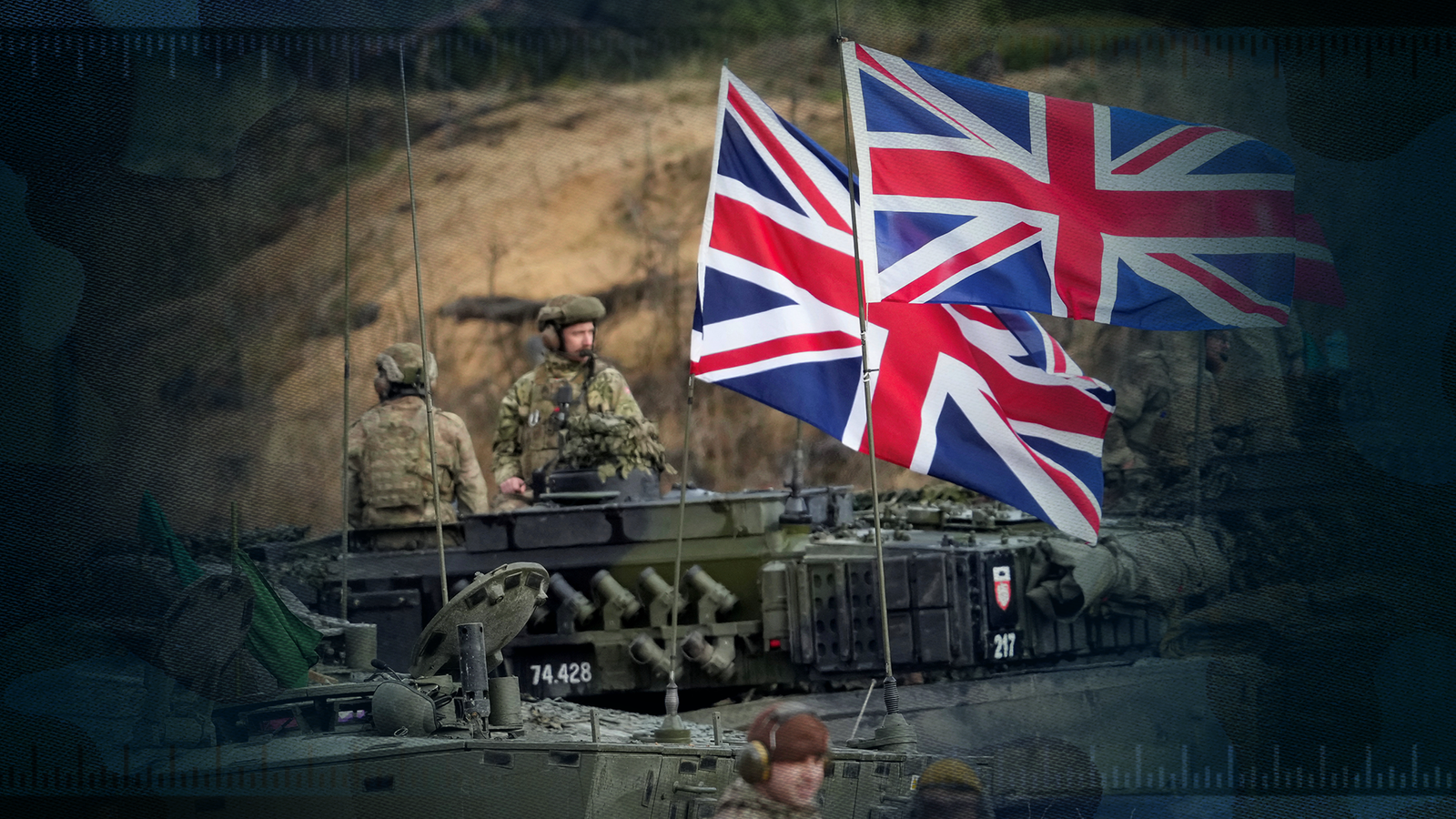UK defence spending as a proportion of GDP has halved since the 1980s – leading to a decline in equipment and a drop of one in six military personnel, Sky News analysis has shown.
It comes after Sky News revealed on Sunday that a senior US general privately told Defence Secretary Ben Wallace that cuts to the British Army meant it was no longer regarded as a top-level fighting force.
Defence minister James Heappey told the Commons he understood Prime Minister Rishi Sunak and Chancellor Jeremy Hunt know the army is “in urgent need of recapitalisation” and “there is a budget coming”.
So what has happened to UK defence spending?
In 2021, the UK spent 2.2% of its Gross Domestic Product on defence, amounting to about £45.9bn.
However, this number has fallen since the mid-1950s. In the financial year ending in 1956, the UK spent just under 8% of its GDP on defence and in 1980 it was 4.1%. Since 2000, the proportion has remained around the 2% mark.
In comparison, health spending as a proportion of GDP in 1956 was just under 3% and in 2020 this figure jumped to over 7%.
Defence spending has remained consistent over recent years because of the government’s pledge, as a NATO member, to spend at least 2% of GDP on defence each year.
Military expenditure compared with other countries
The UK is only one of a handful of countries to have consistently met this NATO benchmark.
The UK has the third-highest average defence spending as a fraction of GDP, behind just the US and Greece.
Also, Greece only hits this 2% target because the money is predominantly spent on salaries and pensions.
However, this could change as many countries are taking measures to increase their defence spending.
Last year, the German Chancellor, Olaf Scholz, pledged a one-off special fund of €100bn (£82bn) to bolster Germany’s defences and to invest 2% of its GDP on defence going forward.
For context, in 2021 Germany’s GDP was $4.26trn and 2% of this is $85.2bn.
Personnel and equipment
The UK has also maintained the NATO standard of allocating at least 20% of its defence budget on equipment.
Over a quarter (28%) of the UK’s defence budget was spent on equipment in 2022, according to NATO estimates.
However, several types of equipment types have seen a decrease in recent years, according to data from the Ministry of Defence (MoD).
Armoured fighting vehicles, like tanks, have seen a decrease of 5% from 2016 to 2022 and artillery has seen a decrease of 2%.
Fixed-wing aircraft that are in service have seen a decrease of 10%, and in-service rotary winged platforms, such as helicopters, have seen a decrease of 24% in the same time period.
While British defence spending has been maintained over a substantial amount of time, personnel numbers in the armed forces have been on the decline for years.
Conservative defence committee chairman Tobias Ellwood told Sky News that “we have become complacent. We need to invest to make sure we retain people, the good people that are there, but there are not enough of them and the equipment is now obsolete”.
Quarterly figures from the MoD show that in 2022 there are just over 145,000 regular armed forces personnel.
This represents a decrease of 14% from the figures of 169,150 10 years ago and personnel figures are set to decrease even further.
Back in November 2022, Ben Wallace told the parliament that the British Army would now be reduced to 73,000 by the middle of the decade. Latest figures show that the number of regular British Army personnel stood at 79,139.
Rising energy costs and inflation will affect the armed forces
The MoD was the only department on the receiving end of budget cuts at the government spending review in October 2021.
The ministry’s most recent annual staff costs were just under £15bn and the ministry can expect calls, like other sectors, for larger pay increases to protect the real terms pay of members of the armed forces.
Rising global energy prices are also likely to put pressure on MoD spending with recent figures showing a spend of around £600m per year on energy and fuel.
Asked about the US general’s private comments on Monday, the prime minister’s official spokesman said the government is “ensuring our armed forces have the equipment and capability they need to meet the threats of tomorrow including through a fully funded £242bn 10-year equipment plan”.
“The prime minister is clear that we have to do everything necessary to protect our people that’s why the UK has the largest defence budget in Europe,” the spokesman added.
The Data and Forensics team is a multi-skilled unit dedicated to providing transparent journalism from Sky News. We gather, analyse and visualise data to tell data-driven stories. We combine traditional reporting skills with advanced analysis of satellite images, social media and other open source information. Through multimedia storytelling we aim to better explain the world while also showing how our journalism is done.





